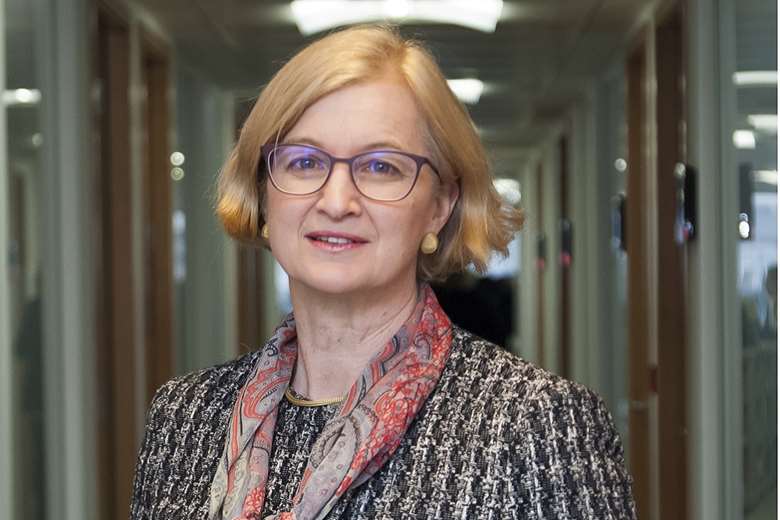Number of children waiting for SCH places doubles in one year, finds Ofsted
Fiona Simpson and Emily Harle
Tuesday, December 13, 2022
The number of children waiting for a place in a secure children’s home (SCH) in England has doubled over the last year, according to Ofsted’s annual report.

“In March this year, around 50 children who are a significant risk to themselves or others were waiting for a place in secure accommodation every day. This had almost doubled from 25 the previous year,” the report states.
It highlights lack of support available for growing numbers of children with complex needs and mental health difficulties following the Covid-19 pandemic as a key driver behind increasing waiting lists.
-
Growing gap in secure care options for children in crisis
-
Ban or regulation: steps to tackle agency dominance of workforce
The inspectorate warns that children who cannot be placed in SCHs risk being placed in unregistered provision.
The report states: “A lack of mental health provision also means that some of these children are placed in SCHs because no other provision can look after them and keep them safe. The children who cannot be placed in an SCH often end up in unregistered provision.”
It also notes that at any one time around 30 children are placed in Scottish secure units by English local authorities because there is not enough provision in England.
According to Ofsted the number of SCHs in England reduced from 29 in 2002 to 13 this year.
At 31 August this year, there were 227 registered places in SCHs. Of these 126 are for children who the courts consider pose a significant risk to themselves or others, and cannot be kept safe by any other placement and 101 are commissioned by the Youth Custody Service for vulnerable children who have been remanded to custody by the courts or are serving a custodial sentence.
The report adds that “because of these children’s individual and increasingly complex needs, combined with staff recruitment and retention issues and some ageing buildings, some SCHs often operate at reduced capacity.”
Yvette Stanley, Ofsted's national director for social care, commented on the increase of children in SCHs, saying: “It really needs joined up planning across government, particularly between the Department for Education and Department for Health and Social Care, in partnership with local authorities.
"We know that we haven’t got the right provision evenly spread across the country. I think some sort of national and regional response is needed because it is only at that level that we’ll be able to ensure that we’ve got sufficient provision across the country.”
Meanwhile, Ofsted notes that “local authorities having to be creative about meeting the needs of the children in their area, from offering bespoke support to a foster carer, to opening up solo homes that only cater for one child to allow children to be accommodated safely”.
The report raises concerns over the increased use of single-child homes, stating: “They can isolate children, be very expensive, and create additional safeguarding risks. They can be right for some children, but this is not a trend we should uncritically welcome.”
Issues are also cited over the recruitment and retention of staff across children’s social care including social workers and children’s home staff.
Ofsted finds that vacancies for registered managers in children’s homes have increased from nine per cent in August 2019 to 14 per cent in August this year.
Around a third of all children’s homes had a manager who was new in post (started on or after 1 September 2021) at 31 August, according to the report.
Meanwhile, in the year to 31 March, 35 per cent of permanent care staff in children’s homes left their role. In the same period, 44 per cent of permanent care staff were newly hired.
The inspectorate states that “children’s homes are losing care workers to retail or hospitality – or another home that pays more – and the number of foster carers has fallen to its lowest point in years. This means there may not be enough places for children to live, or enough staff with the necessary skills to care for them".
Launching the report, Amanda Spielman, Ofsted’s chief inspector said: “Staffing issues mean local authorities are increasingly reliant on agency social workers, whose terms often include more remote working.
“This can affect the quality of their relationships with children, as well as their level of local knowledge. Increasing workloads for those staying in the sector can also make the demands of an already challenging job unsustainable.
“High staff turnover creates instability for children in care, as it reduces their chances to build relationships, which are important for their well-being and sense of security.”
Stanley added: "It’s not simply about numbers of staff in a home, because we also know that providers are struggling to recruit staff with the right qualifications and experiences and skills. So we really need a national workforce strategy that looks into recruiting sufficiently skilled social workers and care workers more broadly."
She also said this strategy should include both pay and progression, as well as professional routes into the social care sector.
The report adds that by the end of August this year, of the 150 local authority children's services departments inspected by Ofsted, 56 per cent were graded good or outstanding overall.
A further two local authorities have not yet been inspected due to a change in geographic boundaries, Ofsted states.




